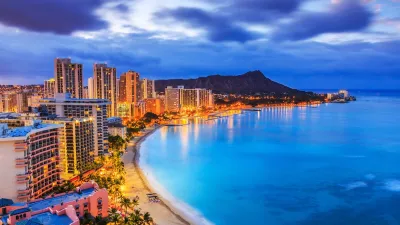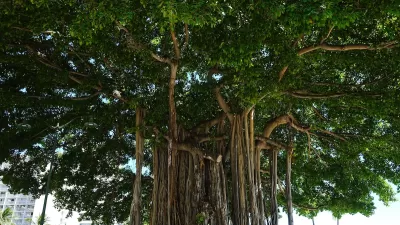For those seeking to diversify metropolitan mode shares, good news can be found in a report just published by the Brookings Institution: most urban jobs are near transit. Unfortunately, employees, for the most part, are not, reports Conor Dougherty.
For those seeking to reduce the amount of solo drivers comprising America's commuters (74%) in order to improve congestion, livability, and environmental impacts, a new Brookings Institution report that found more than 75% of all jobs in the nation's 100 largest metropolitan areas are located in neighborhoods with transit service will come as welcome news. Unfortunately, due to the suburbanization of jobs and homes, only about 27% of employees are able to get to their jobs in less than 90 minutes via mass transit.
Summarizing the report's findings, Dougherty writes: "On average, the nation's 100 largest metropolitan areas have 63% of
their jobs - 64.6 million total positions - located outside the central
city. And while most of those jobs are in near some sort of bus or rail
line, the patchwork of suburban transportation systems makes it hard for
their workers - most of which also live in the suburbs - to get there
without driving."
The report, which ranks the nation's metro areas by overall worker access to transit, found that "the metropolitan areas with the best labor access rate [Salt Lake City, San Jose, Honolulu, etc.]...are places with the best
suburban transportation networks."
So how can these barriers to employee transit access be overcome? The report advises that, "As metro leaders continue to grapple with limited financial resources,
it is critical for transit investment decisions to simultaneously
address suburban coverage gaps as well as disconnected neighborhoods."
FULL STORY: Most Urban Jobs Are Near Transit, but Most Workers Aren’t

Alabama: Trump Terminates Settlements for Black Communities Harmed By Raw Sewage
Trump deemed the landmark civil rights agreement “illegal DEI and environmental justice policy.”

Planetizen Federal Action Tracker
A weekly monitor of how Trump’s orders and actions are impacting planners and planning in America.

The 120 Year Old Tiny Home Villages That Sheltered San Francisco’s Earthquake Refugees
More than a century ago, San Francisco mobilized to house thousands of residents displaced by the 1906 earthquake. Could their strategy offer a model for the present?

Ken Jennings Launches Transit Web Series
The Jeopardy champ wants you to ride public transit.

BLM To Rescind Public Lands Rule
The change will downgrade conservation, once again putting federal land at risk for mining and other extractive uses.

Indy Neighborhood Group Builds Temporary Multi-Use Path
Community members, aided in part by funding from the city, repurposed a vehicle lane to create a protected bike and pedestrian path for the summer season.
Urban Design for Planners 1: Software Tools
This six-course series explores essential urban design concepts using open source software and equips planners with the tools they need to participate fully in the urban design process.
Planning for Universal Design
Learn the tools for implementing Universal Design in planning regulations.
Clanton & Associates, Inc.
Jessamine County Fiscal Court
Institute for Housing and Urban Development Studies (IHS)
City of Grandview
Harvard GSD Executive Education
Toledo-Lucas County Plan Commissions
Salt Lake City
NYU Wagner Graduate School of Public Service





























